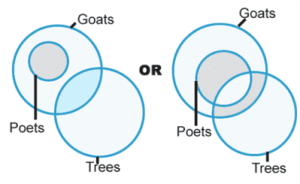Each year, about 3-4 questions are from Profit and Loss in the Quantitative Aptitude section of the CAT exam. Profit and Loss is one of the topics that can cracked easily through shortcuts and fetch you some quick marks.
In this article we’re going to cover some tips that are easy to remember and have the potential of changing your preparation game in 7 minutes.
Before we dig into the article, we list below the terms a student needs to be familiar with.
Terminology:
1. Profit Percentage: the percentage of gain made with respect to the Cost Price of a commodity.
2. Loss Percentage: the percentage of loss occurred with respect to the Cost Price of a commodity.
3. Marked Price: The price prior to the application of a discount.
4. Discount: Percentage of price reduced
Shortcuts:
1. If two articles are sold by a person at the same price but one at a profit of x% and another at a loss of x%, then the seller always incurs a loss and the loss percentage is: (common loss and gain/10)2% = (x/10)2%
Example: I sold two watches for Rs. 300 each, one at a loss of 10% and the other at the profit of 10%. What is the percentage of loss (—) or profit (+) that resulted from the transaction?
(a) + 10
(b) – 1
(c) + 1
(d) – 10
Solution: In cases as such where the Selling Price of two items is same and the loss percentage and profit percentage is also same, the seller suffers a loss percentage.
Here x = 10
Then, Loss percentage incurred = (10/10)2%
Loss percentage incurred = 1%
The answer is (b).
2. Selling Price = Cost Price (1+ (Gain Percentage/100))
Example: A man purchases an item for Rs. 120. If he sells it at a 20% profit. Then, find his selling price.
(a) 120
(b) 169
(c) 144
(d) 100
Solution:
Given,
Cost price of the item = Rs. 120
Profit percentage = 20%
Then, Selling Price = 120 (1+ (20/100))
= 120 + (120 × 0.2) = 144
Therefore, the Selling Price of the item is Rs. 144
So, the answer is (c).
3. Selling Price = Cost Price + Profit/Loss
Example: By selling a watch for Rs. 560, a seller incurs a loss of 20%. Find the Cost Price of the watch for the Shopkeeper.
(a) Rs. 600
(b) Rs. 700
(c) Rs. 610
(d) Rs. 640
Solution: We know that,
Selling Price of the Watch = Rs. 560
Loss Percentage = 20%
Then, Selling Price = 80% of Cost Price
Or, Selling Price = 0.8(Cost Price)
Then, 560 = 0.8 (Cost Price)
Cost Price = 560/0.8 = 700
Therefore, Cost Price of the watch is Rs. 700
The answer is (b).
4. If there are two successive discounts of x% and y% then (x+y – (xy/100)) gives the net discount on the Marked Price.
Example: The Marked Price of a shirt is Rs. 600. The shopkeeper offers a discount of 10% on the shirt and then, follows it with another 20% discount. What is the Selling Price of the Shirt then?
(a) 432
(b) 450
(c) 400
(d) 360
Solution:
We know that,
First Discount = 10%
Second Discount = 20%
Marked Price = Rs. 600
Now, Selling Price = Marked Price — Discount Value
Net Discount = (10 + 20 – ((10 x 20)/100))
= (30 -2) = 28%
Then, Discount Value = 28% of 600 = ((28/100) x 600) = Rs. 168
So, Selling Price = Marked Price — Discount Value = Rs.600 — Rs.168 = Rs. 432
The answer is (a).
5. A dishonest seller sells goods at a profit of x% and uses a weight which is y% less. Then, Net Profit % = ((%profit +%less in weight)/(100 – %less in weight)) x 100)
Example: A dishonest dealer professes to sell at Cost Price but uses an 800 gram weight instead of a 1 kilogram weight. Find the percent profit to the dealer.
(a) 25%
(b) 20%
(c) 12.5%
(d) None of these
Solution:
We know that,
Cost Price = Selling Price
So, Profit Percentage = 0%
1 Kilogram = 1000 grams
1000 grams — 800 grams = 200 grams
Which 20% of 1 Kilogram
So, the weight is 20% less.
Then, the Net Profit Percentage = (((0 +20)/(100-20)) x 100)
= ((20/80) x 100) = 25%
Therefore, the Net Profit Percentage is 25%
The answer is (a).






